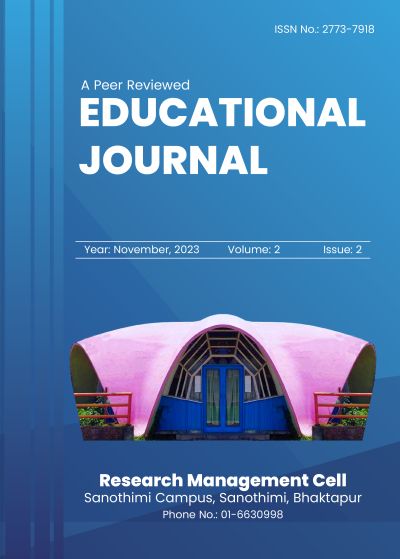Drinking Water Supply System in Kathmandu Valley
DOI:
https://doi.org/10.3126/ej.v2i2.61696Keywords:
Water Quality Management, Kathmandu Valley, Microbiological Parameters, Big ChallengeAbstract
This study designed to analyze physical, chemical and microbiological parameters of drinking water quality and its management by the city water supply system in the Kathmandu Valley. The study covers 18 core areas including 32 samples sites. Altogether 325 samples collected from intake, reservoirs, treatment plants and deep wells to their connectivity as well as alternative sources such as shallow wells, tube wells, processed water and stone spouts of Sundarijal water supply system. Primary information collected through In-depth interview with 155 households (hhs), 15 focus group discussions, interview with 20 water suppliers (government and private sector) and 30 school teachers and students of linking with water supply system within the study areas. The study analyzed 7 physical, 16 chemical and 2 microbiological parameters (Total coliform (TC) and Fecal coliform (FC) following the standard methods (APHA 2000). The findings have elaborated the water quality in the source is acceptable and it is deteriorate the quality linking with its supply chains and connectivity, which is severely affected by the scaled, rusted, leakage, old pipelines and intermittence of water supply. Most of the sampling sites were microbiologically, contaminated (TC 6->180MPN/100mL and FC 1-7MPN/100mL). The processed water contains lower level of essential minerals because of reverse osmosis treatments.
The fluoride (0.8-2mg/L), manganese (0.1-0.5mg/L), ammonia (52-70mg/L), iron 5mg/L, color (20-25°Hazen), pH (6) and turbidity (32-40 NTU) in deep wells, its supplies, well, tube wells were found beyond the value of tolerance level recommended by NDWQS and WHO guidelines. About 98% hhs used traditional methods for water management; indicates poor handling practices. Hence water quality management is a big challenge in Kathmandu Valley in terms of adequate safe water and requires regular surveillances and monitoring system for improvement.




